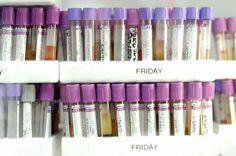The Special Case of HIV
No other epidemic in humanity's history has killed as many people or had as much impact. Other epidemics tend to kill the weakest: the very young and the very old. HIV leads to the deaths of young people in the prime of life.
Because the epidemic is so massive and so all-consuming, it has become a microcosm of all post-apartheid South Africa's challenges and weaknesses. Some of these include:

- Gender imbalances, including violence against women and children
- Economic imbalances, whereby the wealthy are able to get access to ARVs while the poor die of AIDS-related illnesses;
- Political weaknesses, whereby our president has been able to indulge in pseudo-science and very few leaders in the ANC have been prepared to challenge him because the system of proportional representation means politicians are accountable to their party rather than their constituencies
- Government's confusion about how to deal with protests from civil society
- Tensions between tradition (in this case, traditional medicines) and "westernisation" (medical science)
- Racial divisions, whereby the views of the scientific community— dominated by white males— were discounted by the new black government
- Problems with service delivery, particularly in rural areas, as our old and overburdened health system struggles to deal with the huge influx of AIDS patients
- Skills shortages
The democratic government's handling of HIV has been disastrous. As a result, its first ever challenge from civil society came from the Treatment Action Campaign, which demanded affordable health care for people living with HIV. For the first time, the ANC-led government lost the moral high ground when the Constitutional Court compelled it to provide nevirapine to pregnant HIV-positive women.
We are the only country in the world that is discussing nutrition as an alternative to ARVS. But the current struggle between the Health Minister and the HIV community over her insistence that nutrition is an alternative to drugs is not the isolated battle of a lunatic. It should rather be seen in the context of Nepad, and the hunger to reclaim past "indigenous knowledge systems". The alignment of certain sectors of traditional healers behind vitamin-peddling Dr Matthias Rath is part of the same ideological battle.

However, HIV has also brought with it opportunities that we have not fully appreciated. It has brought a new openness about sex, spotlighting harmful practices that have been unchallenged for decades. It has brought a large influx of donor money which can be used to strengthen the entire health system. It has invigorated our scientific community and created opportunities for unique partnerships between organisations that normally would not have much in common.
But we in the media are failing to join the dots and to see AIDS in context. In addition, as HIV affects virtually ever part of our society, it should be a focus of all reporters, from finance to sport. Government has reorganised itself into clusters of similar ministeries but we are still working in silos.
There is also very little understanding in newsrooms about accepted scientific practices, including the importance of evidence-based medicine and peer-reviewed articles. As a result, there has been much confusion within media institutions about how to deal with the AIDS denialists. Ideology has become confused with science. In our desire to appear balanced, we have elevated notions that have little scientific standing.






